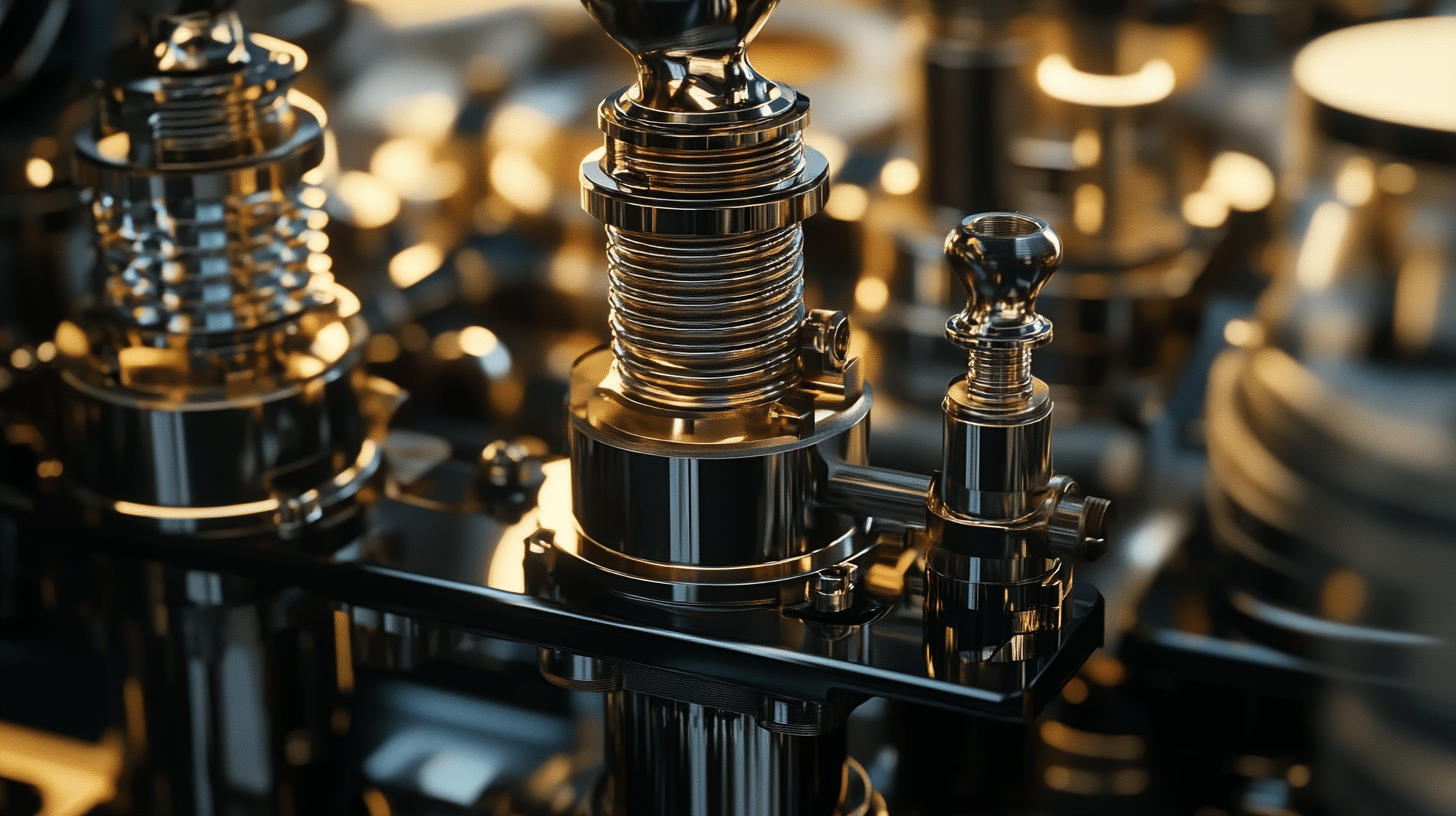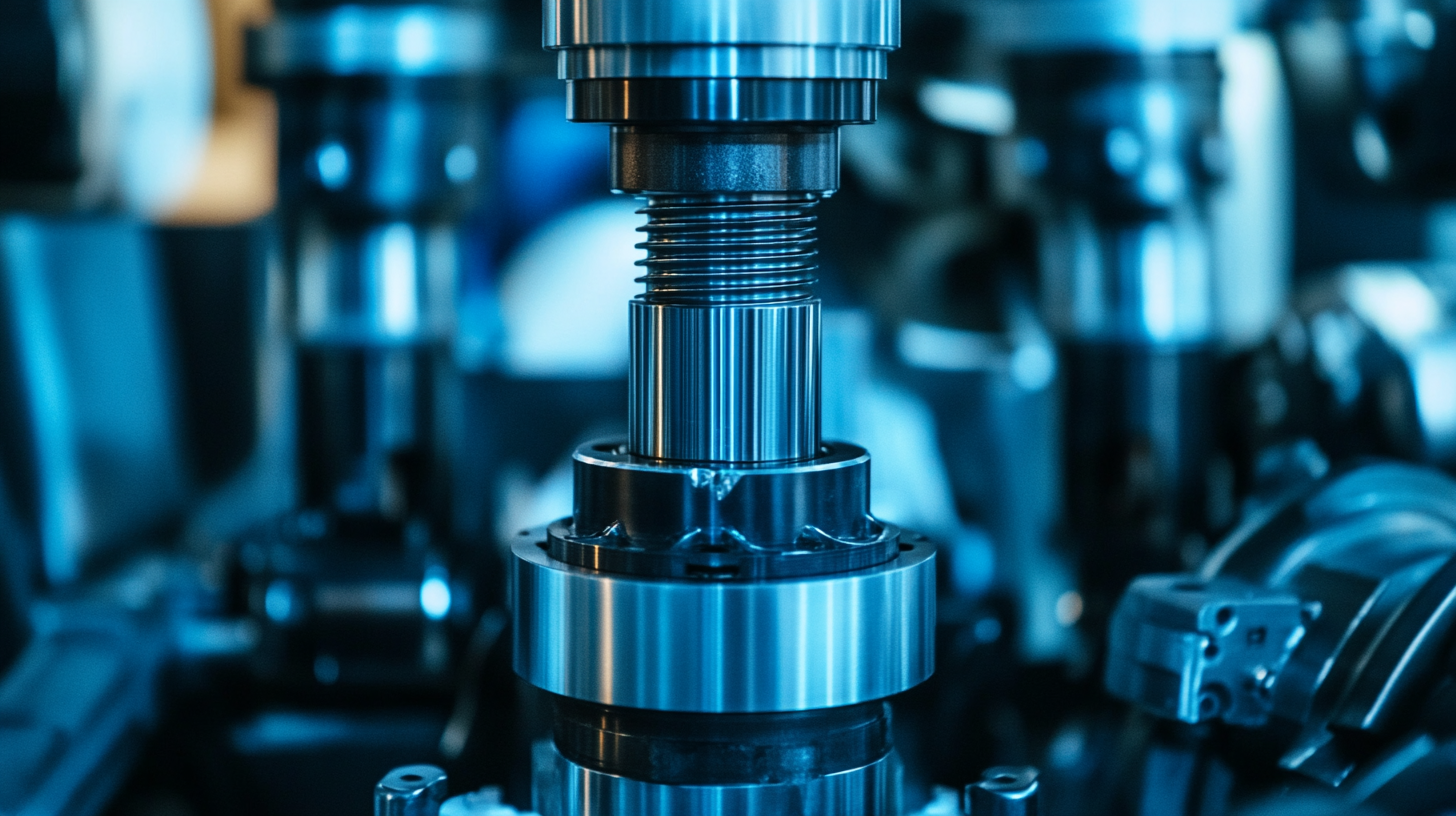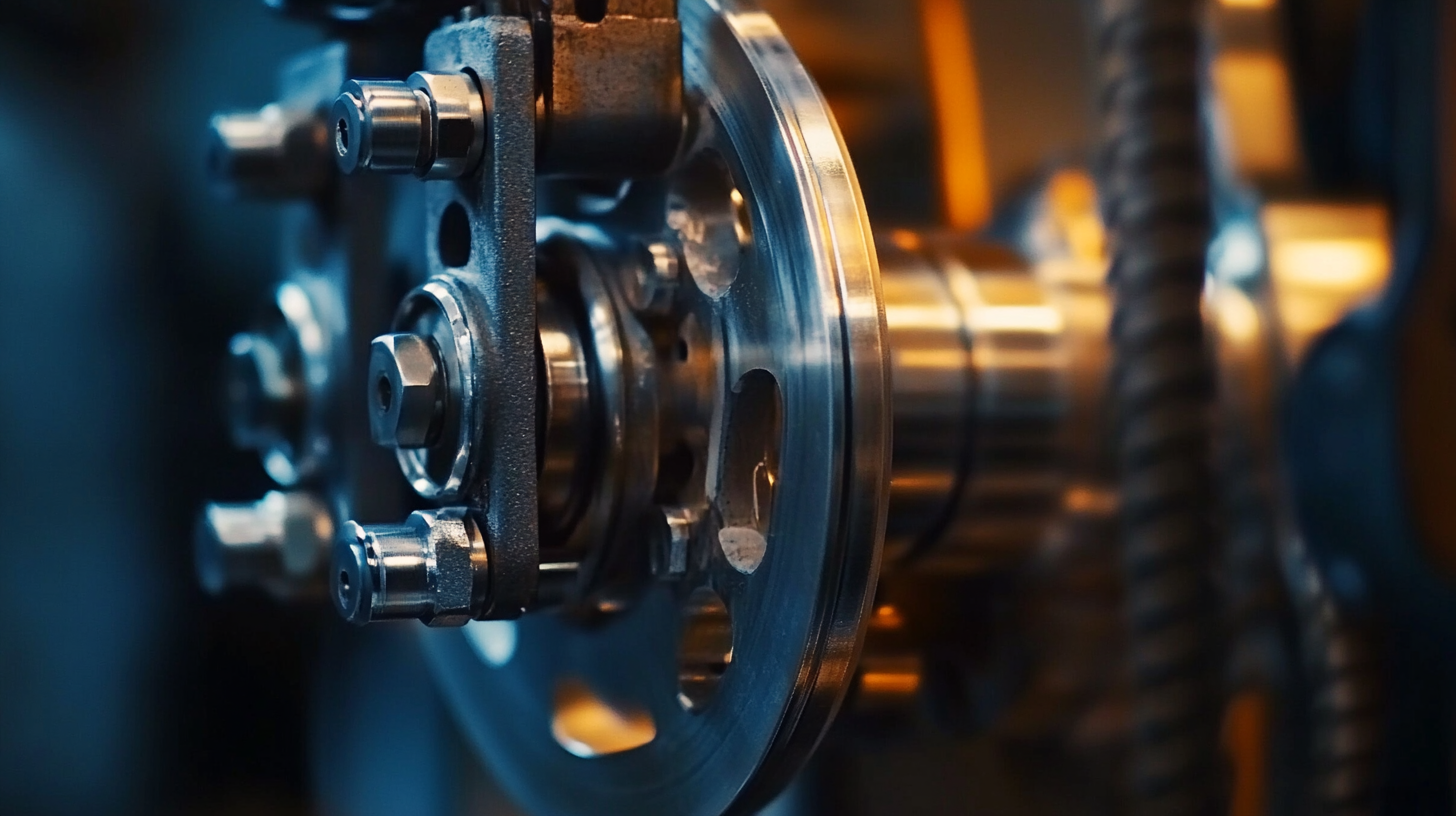International Fluid Power Inc.
International Fluid Power - Innovative Partners For Global Sourcing Of Fluid Power Products. Your Complete Hydraulic Source in SE Minnesota.
INTERNATIONAL FLUID POWER, INC.
Mastering the Art of Selecting the Best Hydraulic Piston for Your Business Needs
In the rapidly evolving landscape of industrial machinery, the selection of the right component can significantly influence operational efficiency and productivity. Among these components, the hydraulic piston stands out as a critical element in various applications, from construction equipment to manufacturing processes. As we look towards 2025, understanding the market dynamics and technological advancements surrounding hydraulic pistons becomes paramount for businesses aiming to optimize performance and reduce costs.

This blog delves into the intricacies of choosing the best hydraulic piston to meet your business needs, providing insights into market trends, performance factors, and best practices. By mastering the art of selection, businesses can ensure not just the functionality of their systems but also a competitive edge in an increasingly challenging market landscape.
Understanding Hydraulic Pistons: Types and Applications
Understanding hydraulic pistons is crucial for businesses looking to optimize their operations in various industrial applications. The global hydraulic cylinder market was valued at approximately USD 14.3 billion in 2021 and is projected to grow to USD 18.3 billion by 2027. This significant growth underscores the increasing demand for hydraulic systems in sectors ranging from construction to aerospace. Hydraulic pistons, as a vital component of these systems, come in various types, including single-acting, double-acting, and radial piston designs, each serving distinct functions and applications.

In recent developments, the characterization of rotary valve control systems has emerged as a promising innovation for enhancing performance and mitigating vibration stress within hydraulic applications. These systems aim to address issues such as pressure loss and dynamic behavior in digital displacement hydraulic machines. As companies continue to embrace advancements in hydraulics, the fusion of technology and traditional hydraulic mechanics presents opportunities to improve efficiency and reliability. With the ongoing positive outlook for fluid power systems, it's evident that understanding the types and applications of hydraulic pistons is essential for businesses aiming to meet future industry demands.
Key Factors to Consider When Selecting a Hydraulic Piston
When selecting the best hydraulic piston for your business needs, it’s crucial to focus on several key factors that can significantly impact performance and efficiency. The global hydraulic cylinder market was valued at approximately USD 14.3 billion in 2021 and is projected to reach USD 18.3 billion by 2027, showcasing the growing demand for high-quality hydraulic components. The choice of hydraulic piston should align with the specific requirements of your applications, such as load capacity, stroke length, and environmental conditions.
### Tips:
1. **Evaluate Your Application**: Consider the specific demands of your industry. For instance, aerospace manufacturing often employs hydraulic press technology for producing critical parts, necessitating high precision and reliability.
2. **Monitor Performance**: Utilize diagnostic methods such as one-way analysis of variance (ANOVA) to evaluate the performance of hydraulic pistons in real-time applications. This statistical approach can help identify and rank essential features, enhancing your decision-making process.
Another important aspect to consider is the design of the hydraulic piston. For instance, bent-axis piston pumps can experience volumetric losses, such as compression loss. Understanding the flow characteristics and potential losses is essential for predicting effective flow rates and optimizing performance in demanding environments.
Evaluating Performance: Metrics for the Right Hydraulic Piston
When selecting a hydraulic piston, evaluating performance metrics is crucial to ensure optimal operational efficiency. One of the primary metrics to consider is the piston’s displacement, which is directly linked to the force output and fluid flow rate. According to a report by the International Fluid Power Society, hydraulic systems with precisely calibrated displacement can improve efficiency by up to 20%, reducing energy consumption and increasing overall productivity.
Another critical metric is the maximum working pressure, which determines the operational limits and safety of the hydraulic piston. Industry standards, such as those outlined by the American National Standards Institute (ANSI), recommend that businesses select pistons that operate well within their system's maximum pressure capabilities to avoid equipment failure and maintain safety. Additionally, analyzing the wear resistance and materials used in piston construction can provide insights into longevity and maintenance intervals—both essential considerations that can impact the total cost of ownership significantly.
By focusing on these performance metrics, businesses can make informed decisions when choosing hydraulic pistons, ensuring they meet specific operational requirements and maximize their return on investment.
Mastering the Art of Selecting the Best Hydraulic Piston for Your Business Needs - Evaluating Performance: Metrics for the Right Hydraulic Piston
| Metric | Value | Ideal Range | Notes |
|---|---|---|---|
| Diameter (mm) | 50 | 40 - 60 | Suitable for medium to heavy applications |
| Stroke Length (mm) | 200 | 150 - 250 | Optimal for reach and force |
| Max Pressure (bar) | 350 | 250 - 400 | High pressure for demanding tasks |
| Cycle Time (s) | 3 | 2 - 5 | Efficiency in operation |
| Weight (kg) | 15 | 10 - 20 | Consider for installation feasibility |
Maintenance Tips for Maximizing Hydraulic Piston Longevity
Proper maintenance of hydraulic pistons is crucial for ensuring their longevity and optimal performance in various applications. One essential tip is to regularly inspect the piston for signs of wear, such as scratches or corrosion. This can help identify potential issues before they lead to significant failures.
Additionally, keeping the hydraulic system clean is vital. Contaminants can accelerate wear and tear, so it's important to use high-quality filters and maintain fluid cleanliness. Regularly changing the hydraulic fluid not only removes dirt and debris but also ensures that the system operates smoothly.
Another key maintenance practice is monitoring the operating temperatures. Excess heat can cause degradation of both the piston and hydraulic fluid, leading to reduced efficiency and potential breakdowns.
Ensuring that the cooling systems function correctly and that there is no excessive load on the piston can help maintain optimal temperatures. Furthermore, proper lubrication is fundamental.
Using the right type of grease or oil can significantly enhance the lifespan of the hydraulic piston and reduce friction, enabling efficient operation even under heavy loads. Regularly reviewing these maintenance practices will contribute to the overall durability and effectiveness of your hydraulic systems.
Common Mistakes to Avoid When Choosing Hydraulic Pistons
 When selecting hydraulic pistons for your business, it's crucial to avoid common pitfalls that could lead to inefficiencies and unexpected costs. One frequent mistake is
failing to consider the specifications required for your specific application. Each hydraulic piston has unique characteristics, including
pressure ratings, bore sizes, and stroke lengths. Neglecting these details can result in selecting a piston that does not meet your operational demands, ultimately affecting
performance and durability.
When selecting hydraulic pistons for your business, it's crucial to avoid common pitfalls that could lead to inefficiencies and unexpected costs. One frequent mistake is
failing to consider the specifications required for your specific application. Each hydraulic piston has unique characteristics, including
pressure ratings, bore sizes, and stroke lengths. Neglecting these details can result in selecting a piston that does not meet your operational demands, ultimately affecting
performance and durability.
Another common error is overlooking the importance of compatibility with existing systems. Choosing a hydraulic piston without ensuring it pairs
well with other hydraulic components can lead to operational disruptions and costly modifications. It's vital to assess your current setup, considering factors like fluid type and
system pressure. Additionally, many buyers prioritize cost over quality, failing to recognize that investing in reliable, high-quality hydraulic pistons can offer better performance
and longevity, saving money in the long run. By being aware of these common mistakes, businesses can make more informed decisions when selecting hydraulic pistons that cater
to their specific needs.
You Can Find International Fluid Power Here:
Search For:
Footer #4 Widget
This is an example of a widget area that you can place text to describe a product or service. You can also use other WordPress widgets such as recent posts, recent comments, a tag cloud or more.
© 2025 International Fluid Power, Inc. All Right Reserved.